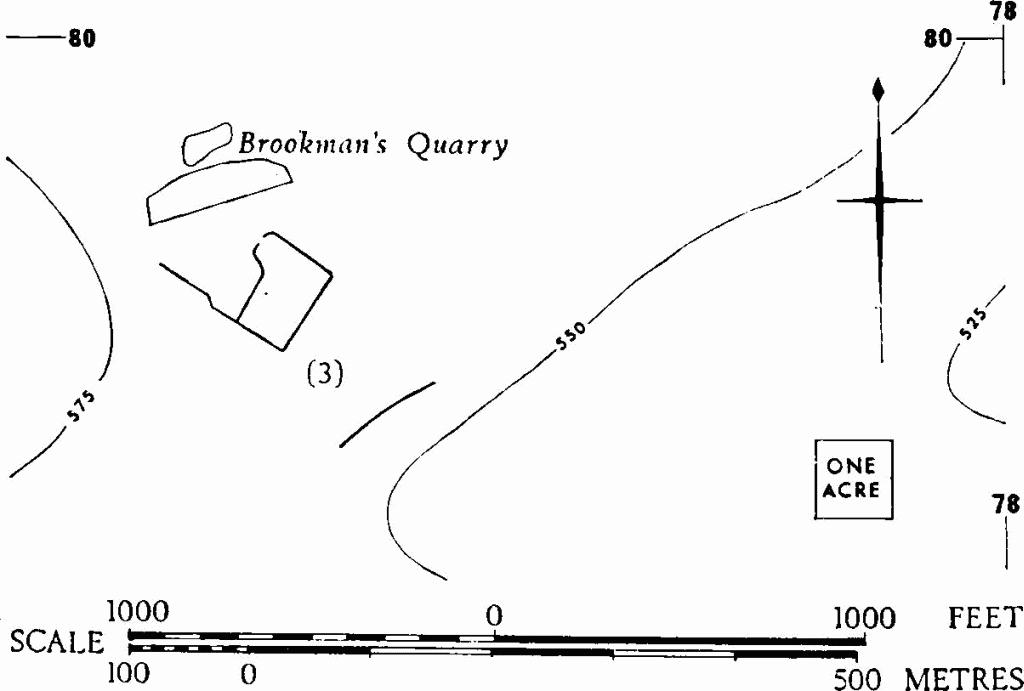Ancient and Historical Monuments in the County of Gloucester Iron Age and Romano-British Monuments in the Gloucestershire Cotswolds. Originally published by Her Majesty's Stationery Office, London, 1976.
This free content was digitised by double rekeying. All rights reserved.
'Tormarton', in Ancient and Historical Monuments in the County of Gloucester Iron Age and Romano-British Monuments in the Gloucestershire Cotswolds( London, 1976), British History Online https://prod.british-history.ac.uk/rchme/ancient-glos/pp120-121 [accessed 24 November 2024].
'Tormarton', in Ancient and Historical Monuments in the County of Gloucester Iron Age and Romano-British Monuments in the Gloucestershire Cotswolds( London, 1976), British History Online, accessed November 24, 2024, https://prod.british-history.ac.uk/rchme/ancient-glos/pp120-121.
"Tormarton". Ancient and Historical Monuments in the County of Gloucester Iron Age and Romano-British Monuments in the Gloucestershire Cotswolds. (London, 1976), , British History Online. Web. 24 November 2024. https://prod.british-history.ac.uk/rchme/ancient-glos/pp120-121.
TORMARTON
(10 miles S.W. of Cirencester)
Two Romano-British settlements and a burial in a stone coffin are reported on the line of road M4 in the S. of the parish. (fn. 1) Romano-British pottery of the 2nd-4th century has been noted on the surface and in a ditch cut by a pipe trench at ST 76467656, some 400 yds. S.W. of the surviving 'Celtic' fields (1). (fn. 2)
'Hebdown Camp' (ST 774766) (fn. 3) is a geological feature partly covered by strip lynchets.
(1) 'Celtic' Fields (ST 770771) on West Littleton Down, now destroyed, formerly covered at least 50 acres on the summit and gentle N.-facing slopes of a broad limestone ridge (Plate 43). Air photographs show an incomplete plan, with extensive ridge-and-furrow intermingled with and obscuring the 'Celtic' fields; these lie N. of the apparent edge of the open-field system of West Littleton. Very faint traces indicate that feature 'a', probably a major boundary line, continues into Wiltshire where, ½ mile further on, relatively well preserved remains of 'Celtic' fields with broad banks suggesting substantial stone walls cover at least 200 acres. It is probable that the fields on West Littleton Down were also defined by stone walls.
R.A.F., VAP 106G/UK 1415: 4405–8; OAP Allen 1350 and 1351, 1 (Ashmolean Museum).
(2) Rectangular Enclosure (ST 76407745), covering 1¼ acres, undated, shows as a crop-mark 500 yds. N.E. of (1) (Plate 54); an entrance occurs half-way along the S.E. side. There is only a slight confirmatory scarp in arable ground, immediately above a moderate S.facing slope.
R.A.F., VAP 106G/UK 1415: 4405–8. C.U.A.P., OAP AXT 23.

Tormarton. (3) Enclosure.
(3) Enclosure (ST 774798), S. of Brookman's Quarry, undated, covers about 1 acre of nearly level ground and has an entrance in the protuberant N.W. angle. A ditch extends N.W. from the W. angle and appears to return N.E. after 230 ft. A further line of ditch lies 300 yds. S.E. of the enclosure.
C.U.A.P., OAP AXT 26, 28–9.
